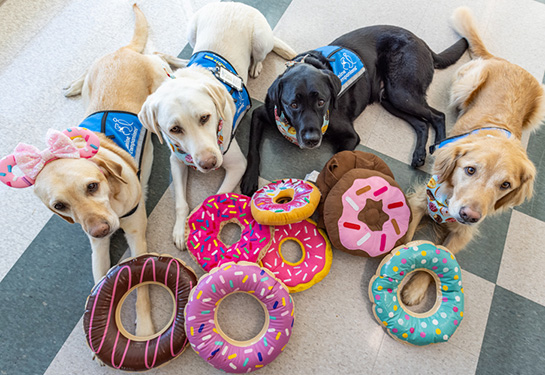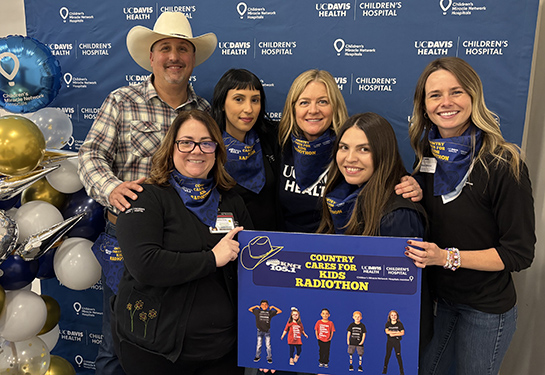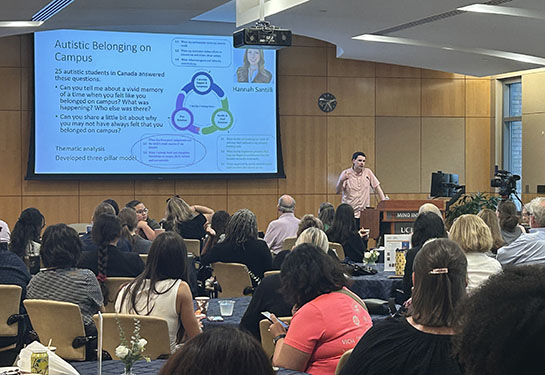New cryotherapy used to retrieve foreign body in child
UC Davis Health pediatric and interventional pulmonologists successfully removed a stick from a pediatric patient’s airway, with the innovative use of cryotherapy.
Cryotherapy is a new method used during a bronchoscopy (a medical procedure that uses a thin, lighted tube, to examine the airway and lungs) to remove objects from the lungs. A special tool called a cryoprobe is placed on the object or surrounding tissue. It quickly freezes the area, causing the object to stick to the probe. This makes it easier to pull the object out safely through the bronchoscope.
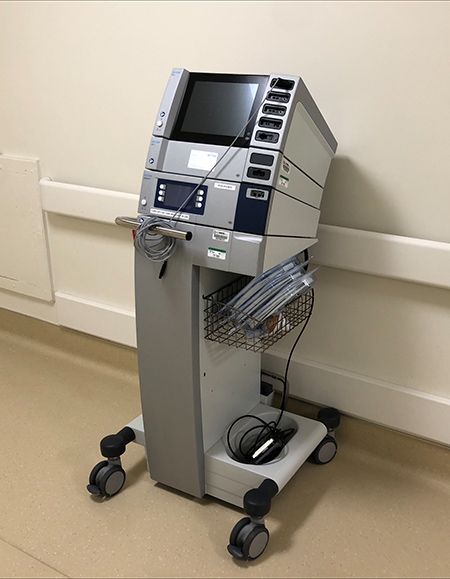
This technique is used to help remove mucous plugs, blood clots and foreign bodies in the airway that contain high water content for freezing and adhering to the cryoprobe. It has been used to freeze and remove mucus in patients who can’t cough it up themselves. But in this case, it was used to help pull out a 6-centimeter piece of stick that was lodged in a child’s airway for three months.
The challenge of retrieving a foreign body aspiration
Foreign body aspiration is when an object is inhaled and gets stuck in the airway or lungs. It remains a significant cause of accidental deaths in children. Unrecognized foreign body aspiration can lead to chronic health problems such as recurrent lung infections. A delayed diagnosis can increase the severity of complications and require surgical intervention.
“A foreign body in the airway is a relatively common occurrence in pediatric patients. The degree of the clinical problem and urgency for intervention varies depending on factors such as the size and shape of the foreign body, its material and prior lung issues in the patient,” said UC Davis pediatric pulmonologist Sanjay Jhawar. “Foreign body retrieval from a small-sized pediatric airway can be a difficult task and conventional approaches may not work at times.”
Pediatric pulmonary and ear, nose and throat teams had twice attempted to remove the stick through bronchoscopy, while the patient was under general anesthesia.
Timely recognition of foreign body aspiration and a multidisciplinary team-based approach can help improve patient outcomes and prevent life threatening and chronic complications. Innovative technologies such as cryotherapy can be used when conventional tools are unsuccessful in the treatment of foreign body aspiration in children.” —Chinh Phan
Traditional methods for foreign body removal include flexible and rigid bronchoscopy using various extraction tools such as forceps, baskets (a wire device used for foreign body removal), snares (a thin wire noose) and endoscopic laser.
But each time the team could only remove small slivers from the foreign body, not the whole thing.
The pediatric teams needed the help of the interventional pulmonology team, which has expertise using cryotherapy with bronchoscopy on adult patients.
“Cryotherapy with bronchoscopy has been successfully used to cryoextract foreign bodies in children, but there aren’t many cases in the literature,” said Chinh Phan, director of interventional pulmonology at UC Davis Health. “The alternative involved surgical resection of a portion of the lung. We believed that cryotherapy via bronchoscopy would offer a less invasive and potentially more favorable option for the patient.”
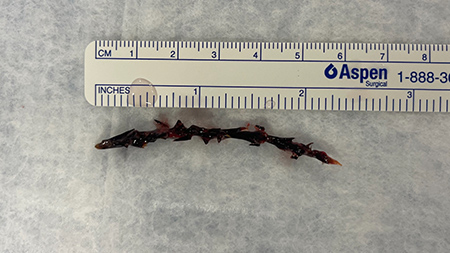
A few minutes after the cryotherapy procedure, the doctors were holding a cup with the pine stick in it. The procedure was a success. The patient was discharged the next day.
“Timely recognition of foreign body aspiration and a multidisciplinary team-based approach can help improve patient outcomes and prevent life threatening and chronic complications,” Phan said. “Innovative technologies such as cryotherapy can be used when conventional tools are unsuccessful in the treatment of foreign body aspiration in children.”


